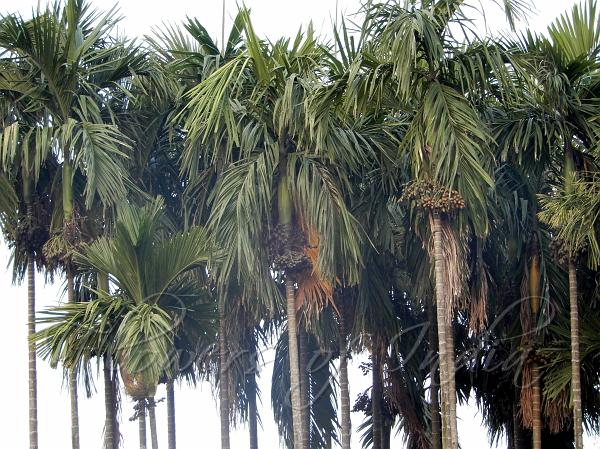|
| Betel Palm |
|

|

| File size | 1013903 |
| Original date | 5/29/19 6:25 PM |
| Resolution | 2048 x 1536 |
| Flash | Flash did not fire, auto |
| Focal length | 32.1mm |
| Exposure time | 1/60s |
| Aperture | 5.6 |
| Focus Distance | |
| Metering Mode | Multi-segment |
| Camera make | NIKON |
| Camera model | COOLPIX A900 |
| Sensor type |
|
|
|
|
Photo: |
Botanical name: Areca catechu Family: Arecaceae (Palm family)
This is the palm which produces to popular betel-nut or supari, which is
an essential ingradient of paan. It is a medium-sized tree growing to 20 m
tall, with a trunk 20-30 cm in diameter. The leaves are 1.5-2 m long,
pinnate, with numerous, crowded leaflets. It is grown for its economically
important seed crop, the Betel nut. The seed contains alkaloids such as
arecaine and arecoline, which when chewed is intoxicating and is also
slightly addictive. Flowers are unisexual, with both male and female
flowers borne in the same inflorescence. Inflorescences are crowded,
much-branched panicles borne below the leaves. Each terminal branch has a
few female flowers borne at the base and numerous male flowers extending
from there out to the branch tip. Flowers of both sexes have six tepals,
are stalkless, creamy-white, fragrant; male flowers are minute, deciduous,
have six stamens, arrowhead-shaped anthers, rudimentary ovary; female
flowers are larger (1.2–2 cm long), with six small sterile stamens and a
three-celled ovary bearing a triangular stigma with three points at the
apex. Fibrous, ovoid fruits, yellow to orange or red when ripe, contain
the betel nut. Betel palm is native to Philippines, widely cultivated in India
and SE Asia.
| Identification credit: Tabish | Photographed in Manipur, Maharashtra & Arunachal Pradesh. |
• Is this flower misidentified? If yes,